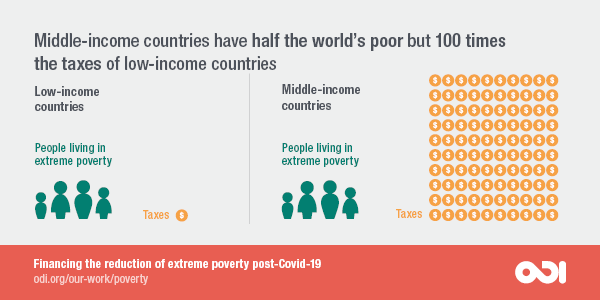Aid is a scarce resource, and this will be felt even more strongly next year. As Covid-19 vaccines become available, donors will need to decide which countries are most in need of support. With the UK’s recent announcement to cut the official development assistance (ODA) budget, the government must choose which countries to prioritise. And ahead of COP26, donors will have to consider which countries are most in need of climate aid in the post-2025 financing arrangements.
Allocating aid to where it is most needed can maximise impact. Yet the idea of what constitutes ‘most needed’ is contentious. As my colleague Nilima Gulrajani powerfully illustrates, there are many reasons why donors give aid, including security interests and trade opportunities. But most people agree that need should be one of the key reasons.
Donors have long regarded the group of 47 Least Developed Countries as being in particular need of aid. But more recent discussions on the Sustainable Development Goals (SDGs) and climate finance have highlighted the needs of three other groups: African countries, Small Island Developing States and fragile states. These four groups now encompass 100 nations.
How do we judge which countries need more aid?
As a growing number of countries are deemed to need aid, it has become increasingly important to gauge whether certain countries merit relatively more aid than others. One way to do this is to use GDP per person to estimate differences in ‘relative need,’ as the World Bank and the Global Fund do. The Global Fund, for example, reduces aid allocated by 3% for every 10% increase in GDP per person. But recent research has questioned how close the relationship between aid and GDP should be.
As Ian Mitchell’s helpful recent review of different measures of needs notes, UK officials Nick Lea and Stefan Dercon make a compelling case for a much closer dependence between aid and GDP. Based on marginal utility considerations, they argue aid should reduce by 10% for every 10% increase in GDP. The GDP per person for the richest middle-income country is 45 times higher than the poorest low-income country. As Mitchell’s review shows, this minor technical issue has enormous practical consequences for the amount of aid available for the poorest countries.
A new approach to measure need
But GDP per person is a crude measure of relative need. So, my colleagues and I at ODI have developed a new approach. We look at the cost of achieving key SDG goals such as ensuring every child can go to school and access to healthcare and water for all. Based on the maximum amount we judge countries could raise in taxes and spend if they prioritised spending on achieving the SDGs, we then compare these costs with countries’ ability to pay for these costs themselves.
The difference between the costs of achieving the SDGs and the ability to pay is how we estimate a country’s need for external finance. We found that financial needs do not neatly map onto a single group of countries, nor is there a simple linear relationship between need and GDP per person. The relative financial needs of the poorest countries turn out to be even greater than current approaches would imply.
This new approach to measuring financial need is still in its infancy. Last year, Homi Kharas and John McArthur published the results of a similar but more ambitious exercise based on the costs of a wider set of SDGs. However, their approach raises a fundamental question about what ‘need’ means. In contrast to our approach, they include the amount countries currently spend on social protection in their needs assessment. This is controversial. It implies that richer countries, who can afford to spend more, have a ‘need’ for a higher standard of living than poorer countries who spend little or nothing on social protection. This point in particular has profound practical implications.
As Kharas highlighted this week, including this measure of social protection needs leads to the counter-intuitive result that Ukraine needs substantially more aid ($350 per person) than Tanzania ($120 per person). Yet after digging into Kharas and McArthur’s detailed figures that they published, it becomes clear that dropping just this one element of their needs assessment reduces Ukraine’s needs by so much ($585 per person) that Ukraine turns out not to need any aid at all. This is also our conclusion.
The need for a better and more transparent debate
As the Covid-19 crisis is putting aid budgets under pressure, it is even more important to make the best use of aid. More sophisticated approaches to measuring the relative need of aid based on an internationally consistent measure of need that treats all countries equally, could help here. This is how relative needs for education, health, water and justice are already measured, and the same should be true for social protection.
But whatever the approach is, there should be more openness about how need is being assessed. What might appear as obscure technical issues – exactly how close the relationship between aid and GDP should be or what should be included as a financing need – involve political value judgements. They also have profound implications for how much aid the poorest countries receive. These issues merit a better, more transparent debate.

